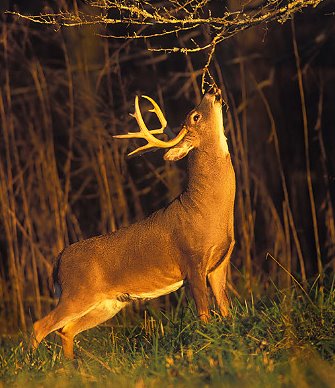
White-tailed deer populations span from from the Atlantic to the pacific, north into Canada, and as far south as Peru. In every area white-tailed deer live, something is out to get them. Hunters will hunt and predators must eat, but deer have adapted to the endless pursuit of predators, including humans, and here is how.
Whitetail deer are mostly active at dusk and dawn (crepuscular) and will often feed at night, becoming totally nocturanal. This may be an adaptation to the habits of man because humans, of all animals, rely most heavily on sight to find deer. Deer, especially mature bucks, go nocturnal counter our limitations.
Sight, however, is not the whitetail’s keenest sense. Deer often can not distinguish between a motionless object and its background, but deer are quick to respond at the slightest movement. Just a twitch is enough to warn a deer that something is not quite right and set the animal on high alert. Deer hunters know this well.
If a deer is suspicious, but there is no movement, the deer will approach and stomp with its front leg in an attempt to make the out-of-place “thing” move. Without a reaction, a curious and smart white-tailed deer may also call into duty their sharpest sense – smell. A deer may circle downwind and analyze the wind with its nose in an attempt to detect danger. If things don’t smell right… goodbye!
As good as their senses are to sight and sound, there is no denying that a deer’s keen sense of hearing is their most effective weapon to ward off would-be predators and hopeful hunters. This is why hunting buck scrapes and using doe urine can be highly effective when used properly. Their ears are designed to collect sound waves, the eyes to collect colors, and their nose to smell danger. They all add up to one heck of a crafty white-tailed deer!

